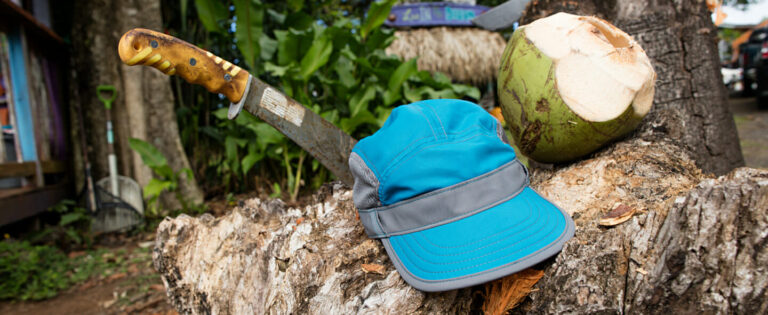Whether in the lowlands, on the coast or in the mountains – walking with your dog is a great experience and really enriching for both the human and the hound. To ensure that dogs and their masters or mistresses can enjoy rambling without a care in the world, it’s sensible to consider and prepare a few things before dog owners set off into the mountains with their four-legged friends.
The following ten questions, frequently asked by dog owners and hikers with an affinity for the great outdoors, show what you should think about and look out for when hiking with dogs.
How old does my dog need to be to go walking in the mountains?
There is no universal answer to the question of how old a dog should be to go walking in the mountains. Longer hikes can lead to increased stress on joints and knees for very young dogs and puppies. With older dogs, the dog’s general fitness and any ailments it may have will decide the type and length of the walks. Older dogs with back or hip problems in particular should be looked after in this respect.
Of course, it’s not just age and physical condition that play an important role, but also the breed and disposition of the four-legged fellow.
Which breeds are best for mountain walks?

Some dog breeds are, generally speaking, more active than others. Dogs are also different in terms of their frame, size and constitution, so not all of them are suitable hiking companions. In this respect, it is not necessarily recommended that a sausage dog, pug or Chihuahua accompanies you on your upcoming hut tour or Alpine crossing.
Working or hunting dogs, on the other hand, are better qualified. They are also readily used in alpine farming to help with sheep, goats and cows. Others help people as trained rescue dogs, search dogs or avalanche dogs.
Dog breeds with a medium to high shoulder height and good physical condition are ideal companions for strenuous mountain touring. Whether the Australian Shepherd, Siberian Husky, Bernese Mountain Dog or the Labrador Retriever – many thoroughbred dogs make perseverant and intelligent hiking dogs.
How do I prepare my dog for longer hikes?
Through long strolls and short hikes, dog owners will soon get a first impression of how fit their particular dog is, and how much it likes walking. When doing this, it is of course important not to overextend your dog and to ensure that there are enough breaks with plenty of fresh water, especially at the start. Really high temperatures should also be avoided if possible so that the soon-to-be hiking dog isn’t stretched to an unhealthy extent.

How long you can hike for with your dog depends on many different and very individual factors.
Which hikes are good for dogs?
Dog owners have to adapt their hikes to the condition of their dogs so as not to endanger their health. In addition, the planning of the tour always requires some care and caution: passages that are too narrow where there is a risk of falling and especially via ferrata must of course be avoided.
Steep and stony paths are no problem for many dogs. Of course, steep ascents are just as challenging for dogs as for human hikers, but they are doable.
Summer hikes with shady passages and running water to cool down in and to drink from are also optimal.
What food is suitable for hikes?
Because of its shelf life, dry food lends itself better to longer or multi-day hikes than wet food. The dog should be fed the usual quantity and in the rhythm that it is used to.
Nevertheless, it’s better not to feed your dog right before a strenuous hike in the mountains. When hiking, dog owners should plan in at least a one hour break for their four-legged friends for digestion and regeneration.
With the increased exertion, getting enough fluids is extremely important. Plenty of water for the dog, a water bowl in your walking backpack and regular drink breaks are therefore of utmost importance. Especially in summer heat, dogs quickly run the risk of getting heat stroke. Some hikes are therefore better done in spring or autumn.
What equipment is important for hiking with a dog?

On stony paths, sharp rocks can cause uncomfortable lacerations and cuts to the paws. A first aid kit for dogs should therefore always contain a disinfectant, the most important bandaging materials, and tweezers. A pair of tick tweezers and an extra towel so you can dry your dog if necessary should also be packed for any longer hikes. The low weight and packed dimensions of microfibre towels make them especially suitable for both dogs and people.
Food, a drinking bowl and enough water are likewise indispensable when hiking with dogs. A dog toy and perhaps a light dog blanket will of course also find their way into your pack on longer tours.
Dogs can even carry a few small things themselves with the appropriate dog panniers. Of course, whether the panniers disturb them while they’re walking and how much weight they can carry varies from dog to dog.
A leash and a comfortable harness or collar are also important for dogs when you’re hiking.
Which lead is right for hill walking with dogs?
In many situations, a lead is very helpful when you’re hiking, and in some regions it’s even mandatory. Nature reserves and cow pastures are particularly sensitive mountain areas when it comes to this.

Whether your dog can or should in general run free when hiking depends on many different factors. To do this, the dog must be very obedient and reliable. Depending on their breed and character, some dogs might look ahead more, while others are rather clumsy. Surefootedness and the ability to recognise and assess danger are not possessed by every dog to the same degree.
When hiking, dog owners can choose between flat leads and flexible leashes. Flat leads are only suitable for hiking in the mountains to a limited extent because they aren’t comfortable to handle for a long time, and the leash tends to get tangled and caught.
To keep your hands free when you’re hiking with a dog so you can use walking poles, for example, flexible leashes can be attached to your backpack’s hip belt. If you do this, though, both dog and hiker should be equally sure-footed and experienced.
In dangerous areas, hikers are best advised to undo the fixed connection to the belt in order to avoid accidents.
What should be considered if dogs and cows come into contact?
Again and again, you hear reports of incidents where cows have attacked dogs. If walking paths lead through cow pastures, caution is advised, especially in spring. At this time, mother cows are bringing their calves into the world, and are very concerned for the safety of their young. From the perspective of a cow, a dog poses a threat to their offspring, which must be protected by any means possible.

When travelling through cow pastures, hikers should cross quickly with their dogs on a short leash. The hiker should neither run, nor lose sight of the mother cow (but don’t stare them directly in the eyes, either, so as not to further alarm them). If it’s possible, grazing cows can be walked around with a wide berth.
If a cow does attack hiker and dog, the dog should be let off its lead immediately. This way, both human and animal will have a better chance of getting away quickly.
Can you stay overnight in a hut with a dog?
As a general rule, dogs aren’t allowed to stay overnight in the sleeping quarters or rooms of a hut. But, if dog and owner don’t want to be separated even in the mountain hut, dog owners should get in contact with the manager of the hut in advance. This way you can ask whether there is anywhere to sleep that is appropriate for dog owners. Especially in the low season, good, mutually agreeable solutions can be found.
What else should be considered when hill walking with dogs?
Targeted training and particular commands help the human-dog team to travel through the mountains as safely and efficiently as possible. When going uphill, dogs usually walk in front. At confusing or dangerous points, the dog should be tightly secured by the collar, harness or on a short lead.
When climbing downhill, it’s often helpful for the dog to go behind the walker. This means that difficult passages can be negotiated together, and the stress on the dog’s joints isn’t as high as when it’s running and jumping quickly.
Conclusion

Whether a day trip, a weekend of hiking or a walking holiday with a dog, with the right equipment and a bit of training and preparation, the days in the mountains will turn into an unforgettable experience for hiker and hound. Many camping sites and holiday rentals are specially equipped for the needs of dog owners.
Additional information about hikes suitable with dogs, as well as current regulations, can be found at the local tourist office, information point or the town hall.
If dog owners are not sure if their pet is fit enough for a longer walk, they should consult their vet beforehand just in case. Only when both dog and human are motivated and in good physical condition is walking in the mountains fun!




